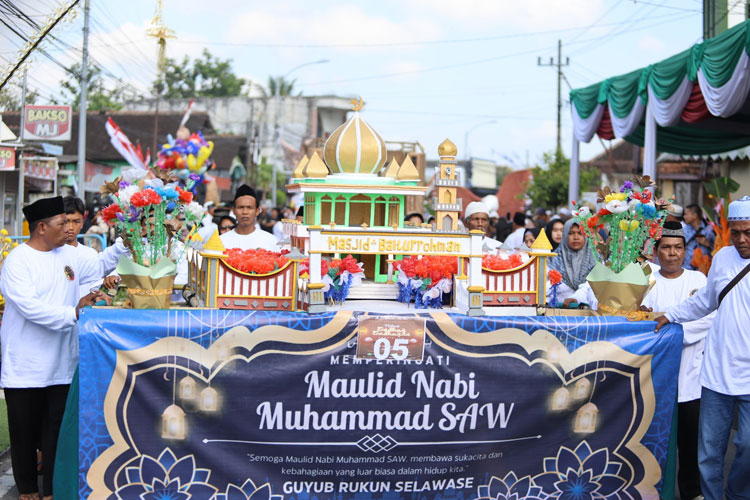Endhog-endhogan: Celebrating the Muslim Easter van Java

TIMESINDONESIA, BANYUWANGI – When the word Easter is associated with eggs and Christian in the West, the local muslim in Banyuwangi has the same way to celebrate their prophet's birthday. The tradition called as Endhog-endhogan.
Endhog-endhogan in Banyuwangi appears as its Islamic counterpart. It's an annual celebration of the Prophet Muhammad’s birthday wrapped in local culture, spirituality, and festive creativity.
Advertisement
Origins, Acculturation, and Symbolism
The Endhog-endhogan tradition began in Banyuwangi in the late 18th century as part of Islamic preaching and resistance against Dutch colonial influence.
What makes it unique is the way it embodies acculturation: Islamic teachings were introduced not by erasing local Osing customs and the Dutch influence, but by weaving them together with symbols familiar to the local community.
In Javanese culture, eggs had long symbolized fertility and new life. By adopting and reframing this symbol within an Islamic context—where the egg’s shell represents society and its contents signify human deeds—religious leaders found a way to make Islam resonate with local traditions.
This blending of the spiritual and the cultural made the message of Islam more accessible and meaningful for Banyuwangi’s diverse communities.
Rituals and Festivities
During the celebration, residents decorate boiled eggs with colorful paper flowers, then place them on banana trunks called jodhang. These decorated carriers are paraded around the village or displayed at mosques, accompanied by chants of selawat, barzanji, (spiritual songs) and collective prayers.
The most vibrant celebrations are often held in Kembiritan Village in Genteng District, where the parade stretches for about 2.2 kilometers from Baiturrahman Mosque to the village office. Thousands of people take part, and the procession is often inaugurated by the Regent of Banyuwangi herself.
Creativity and Symbolic Displays
The creativity of the festival is striking. The jodhang creations are not limited to eggs and flowers but often feature replicas of the Kaaba, towering egg boats measuring six to seven meters, date palms, camels, and even riders.
These displays showcase both artistry and devotion, transforming the streets into a moving gallery of Islamic symbols interwoven with local aesthetics.
"Endhog-endhogan is more than a festival. It is an expression of love for the Prophet and a platform to strengthen community bonds," Ipuk, the regent of Banyuwangi said while attending the festival (5/9/2025).
At the same time, the tradition supports the local economy. Craftsmen and traders benefit from the demand for eggs, paper flowers, and ornamental decorations, turning the event into both a spiritual and economic opportunity for Banyuwangi’s people.
Despite its roots in colonial-era resistance, the tradition has endured and adapted to modern times. Since 1995, the Banyuwangi government has included Endhog-endhogan in its official cultural and tourism calendar, transforming it into a religious attraction that also draws visitors. .
Endhog-endhogan is not merely a tradition. It is a tapestry of faith, creativity, acculturation, and togetherness. Rooted in history yet thriving in modern times, it continues to inspire devotion and solidarity, showing how religion and culture can intertwine beautifully to create celebrations that are both sacred and joyful. (*)
**) Ikuti berita terbaru TIMES Indonesia di Google News klik link ini dan jangan lupa di follow.
| Editor | : Khodijah Siti |
| Publisher | : Rizal Dani |

